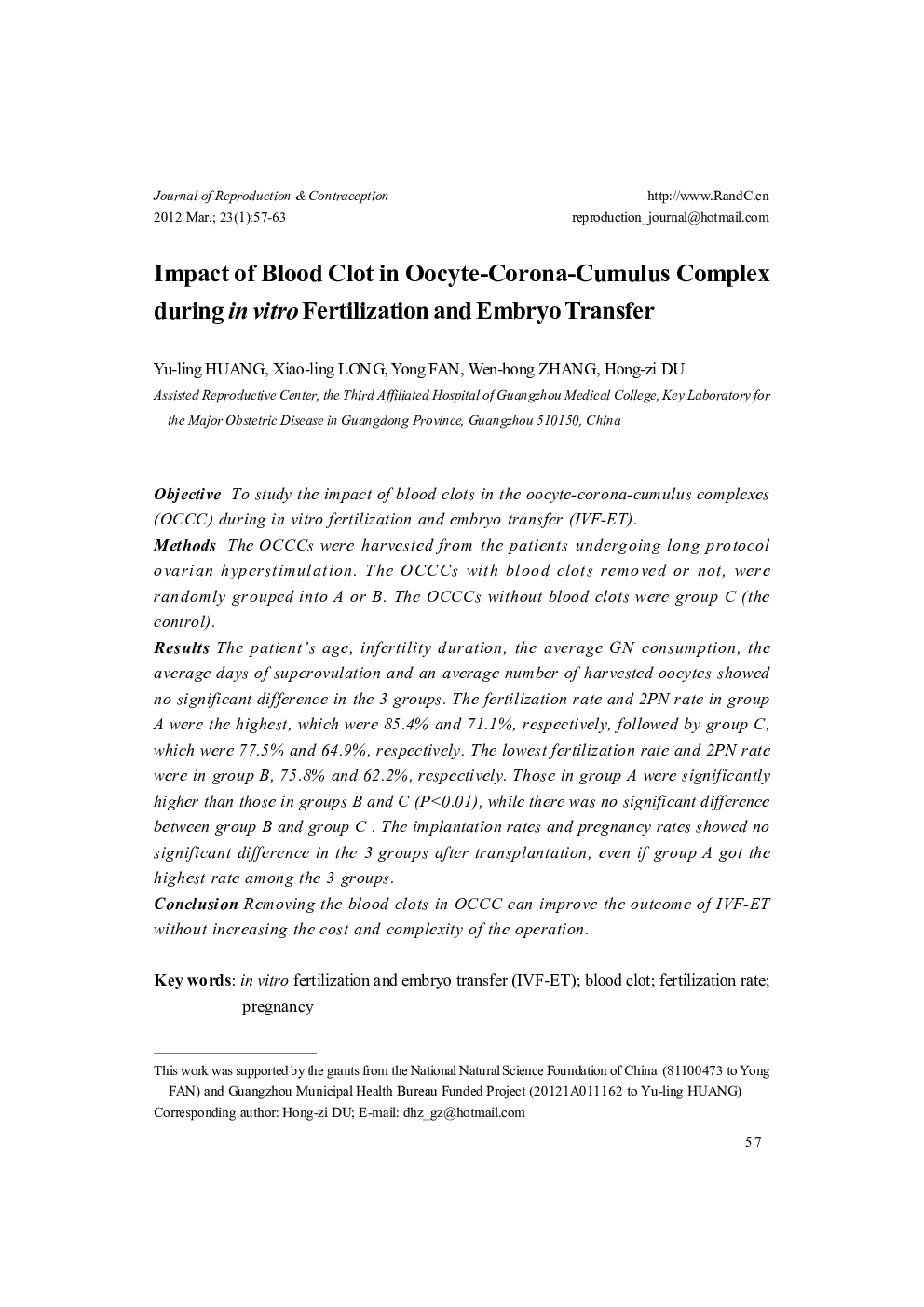| Article ID | Journal | Published Year | Pages | File Type |
|---|---|---|---|---|
| 3963421 | Journal of Reproduction and Contraception | 2012 | 7 Pages |
ObjectiveTo study the impact of blood clots in the oocyte-corona-cumulus complexes (OCCC) during in vitro fertilization and embryo transfer (IVF-ET).MethodsThe OCCCs were harvested from the patients undergoing long protocol ovarian hyperstimulation. The OCCCs with blood clots removed or not, were randomly grouped into A or B. The OCCCs without blood clots were group C (the control).ResultsThe patient's age, infertility duration, the average GN consumption, the average days of superovulation and an average number of harvested oocytes showed no significant difference in the 3 groups. The fertilization rate and 2PN rate in group A were the highest, which were 85.4% and 71.1%, respectively, followed by group C, which were 77.5% and 64.9%, respectively. The lowest fertilization rate and 2PN rate were in group B, 75.8% and 62.2%, respectively. Those in group A were significantly higher than those in groups B and C (P<0.01), while there was no significant difference between group B and group C. The implantation rates and pregnancy rates showed no significant difference in the 3 groups after transplantation, even if group A got the highest rate among the 3 groups.ConclusionsRemoving the blood clots in OCCC can improve the outcome of IVF-ET without increasing the cost and complexity of the operation.
